SUSTAINABILITY 2024 REPORT

by


by
We are pleased to present our first corporate sustainability report. MacDonald-Miller’s commitment to sustainability stems from our company mission to make buildings work better.
At MacDonald-Miller we are ready to zero in on carbon neutrality and ready to support building projects at every stage of their sustainability journey. As a full-service mechanical contractor with a world-class engineering team, we are proud to shape projects that influence and enhance our local communities in Washington, Oregon, and beyond. We design, build, and optimize mechanical systems that lower energy use without compromising performance.
Why are we publishing this report?
1. We hear the demand. We’re tuned in to what our clients are asking for. There’s a growing call for robust sustainability solutions in building design and operations. This demand has only intensified since the inception of Leadership in Energy and Environmental Design (LEED) nearly three decades ago, alongside the rising prominence of Environment, Social, Governance (ESG) initiatives aimed at risk mitigation. We understand that a truly resilient company goes beyond the basics, offering comprehensive services that prioritize environmental health therefore we also set ambitious sustainability goals of our own.
2. We lead by example. As of 2023, we have joined both the Climate Pledge and the MEP 2040 sustainability commitments. As a proud signatory, we are pleased to be able to share our findings publicly with our employees, peers, and customers. This report marks the culmination of our efforts in establishing a baseline for our sustainability journey.
3. We bring solutions. MacDonald-Miller Facility Solutions isn’t just a name; it’s a promise. We’re uniquely equipped to offer innovative solutions that address the challenges posed by our evolving climate and building codes. Whether you’re navigating stringent state building performance standards or simply aiming to cut down on energy costs, count on us to deliver tailored solutions that meet your needs.
Sincerely,
Gus Simonds, CEO MacDonald-Miller Facility Solutions, LLC

Net Zero Carbon by 2040 for company operations and projects.
There is a place for everyone on our sustainability journey.

SUSTAINABILITY ACCELERATORS COMMITTEE
We plan, manage, track, and provide engineering assistance in executing sustainability efforts of MMFS, including MEP 2040 and Climate Pledge.
In December of 2022 we committed to net zero emissions in our facilities and operations by 2040 by becoming a signatory for the Climate Pledge. Our benchmark data from 2022 is the first step to regular reporting, carbon elimination and understanding credible offsets that will help us meet our goals.
Among the first in the building design and construction industry to demonstrate leadership in disclosure of total corporate GHG emissions, including third party evaluated Scope 3 emissions.
1. Engage material and equipment vendors and manufacturers about reducing energy and water use throughout the value chain.
2. Transition vehicle fleet to electric and hybrid (5% by 2025, 25% by 2030).
3. Explore employee commute data; evaluate realistic reductions for gaspowered single passenger trips.
Greenhouse gas emissions affiliated with building natural gas and vehicle fleet.
Excludes refrigerant leakage for 2022
Greenhouse gas affiliated with generation of purchased electricity for the buildings we occupy.
Value Chain Emissions
Greenhouse gases affiliated with upstream and downstream activities. Our biggest GHG emissions stem from capital goods, which is typically comprised of equipment, pipes, valves, fittings, sheet metal, and electrical materials.
10,018
5,527
11
Gas-powered passenger vehicles for one year. Homes’ energy use for one year. Wind turbines running for a year needed to offset these emissions.
3 calculations were performed by third-party consultant Brightworks Sustainability. Information for calculations included financial/spend based, estimations, and/or raw data.

OREGON CITY, OR
Serving the growing County, this 257,000 square-foot building includes courtrooms, judicial chambers, jury assembly, and office spaces.
• LEED Gold
• No natural gas on site
• Resiliency considerations
•
•
• Over 37% operational GHG emissions reduction

A highlight of a few of the sustainable projects we’ve designed and constructed between 2023–2024.
Rooftop and parking lot solar arrays
Over 1.5 million square feet devoted to bringing people together in ballrooms, 62 meeting spaces, lobby, offices, common areas, and terrace. Committed to safety, MMFS contributed 797,000 on-site hours with a Recordable Incident Rate of 0.5, well below the national average of 3.9.
• High efficiency HVAC: Heat recovery chiller for space heating and cooling
• Indoor Air Quality: 35 air handling units (heat recovery coils on exhaust), low VOC materials and finishes
• 232,000 sf of radiant flooring
• Rainwater harvesting
• 143kW rooftop solar array (1% offset of annual energy cost)
REDMOND, WA

MacDonald-Miller is providing a multiphase implementation of energy efficiency measures to comply with the Washington State Clean Building Standard on this 150,000+ square foot building.
GOALS
• Target Energy Use Intensity = 55 (Current EUI: 87.5)
BELLEVUE, WA
KEY FEATURES
• Water source heat pump efficiency upgrades
• Heat pump for domestic hot water in kitchen
• HVAC controls upgrade
• Retro commissioning
• Upgrades to the chilled and hot water pumps
• New boilers, domestic hot water upgrades
• Lighting and lighting controls improvements
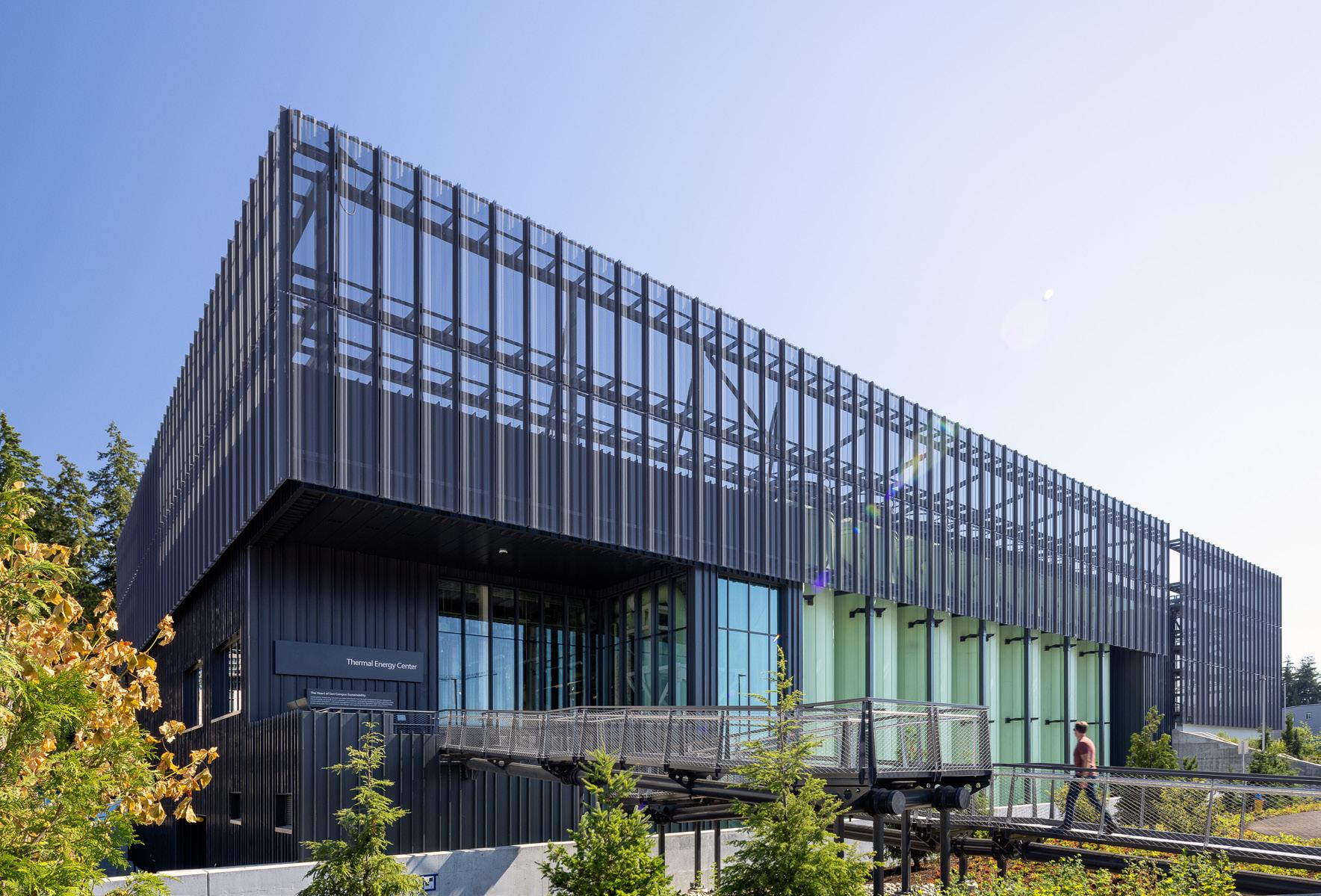
This geothermal central plant serves 17 new buildings (approx. 3,000,000 square feet) on a 72-acre site. As the design-build contractor with a shared design role, we were proud to provide assistance with engineering, estimating, and constructibility during design. We provided all detailing, prefabrication, and installation of the mechanical systems for this complex and inspiring project.

• No fossil fuels – all electric plant
• 50% energy use reduction
KEY FEATURES
• 10,500 ton chilled water plant with heat recovery and geothermal energy exchange. Designed for future capacity of 12,000 tons
Our commitment to leading the industry starts with our vision to demonstrate that every project has a path to a carbon neutral outcome.
• Thermal storage tanks for heating water and chilled water
• 875 geowells drilled 550 feet underground
This mixed-use 120,000 square foot building will be home to Brooks Running. This was a plan-spec project for MMFS, providing installation of mechanical and plumbing systems in the core and shell.
• Seattle Living Building Pilot Program
• Materials Petal Certification
• 25% energy use reduction
• Treated rainwater for all non-potable uses, e.g. toilet flushing and irrigation
At MacDonald-Miller Facility Solutions, our company culture is defined by a spirit of collaboration, innovation, and continuous improvement. We foster an environment where every team member feels valued, empowered, and inspired to make a difference. Our commitment to community extends beyond our workplace, as we actively engage in philanthropic initiatives, volunteer efforts, and partnerships aimed at creating positive social and environmental impacts in the communities we serve.
OUR MOTTO You be you and together we can.
The previous page demonstrates our carbon footprint, here is a summary of our positive impact – otherwise known as our handprint (1):





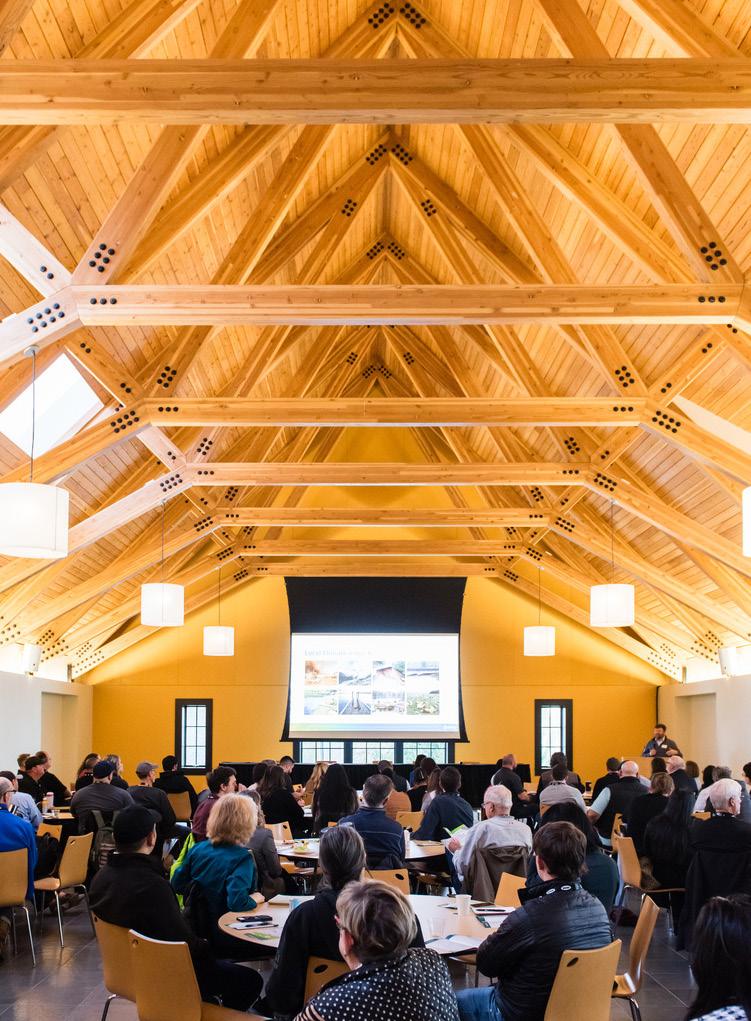


We aim to include the following percentages of MWBE (Minority/ Women Owned Business Enterprises) firms across our work:
• 7% in Construction Division
• 2.5% in Building Services Division
• 10% in Corporate Services
Why is culture and community so important to sustainability?
From our experience, the most successful, innovative, and impactful projects are comprised of folks that look out for one another.
Life happens. Family members get sick, mouths need to get fed, and bills need to be paid. Having each other’s backs is in our blood – and doing so means we can all keep showing up to be our best selves.
We truly believe that when we sustain our community (that’s all of you too) then we sustain your buildings.
1 Norris, Gregory. Handprint-Based NetPositive Assessment. Harvard T.H. Chan School of Public Health. Nov 2015.Going on over 60 years in business, we’ve watched markets and technology change. We’ve adapted by employing some of the brightest minds that imagine and deliver solutions – BIM detailing & MLab, 3D scanning, technical support for the refrigerant transition, and constant communication in the field. You want it; we’re probably already doing it!
Provided 59 existing buildings with rebates and over $1m in ongoing annual energy savings
0.3800 safety rating, 300 OSHA 30 graduates on staff
22 equipment vendors received letters from us advocating for EPDs (embodied carbon data for mechanical & plumbing products)
38 tons of CO2 avoided by performing 4,646 remote service calls versus sending a vehicle (Smart Building Services)
146,674 tons of CO2 was avoided at customer sites due to running buildings more efficiently
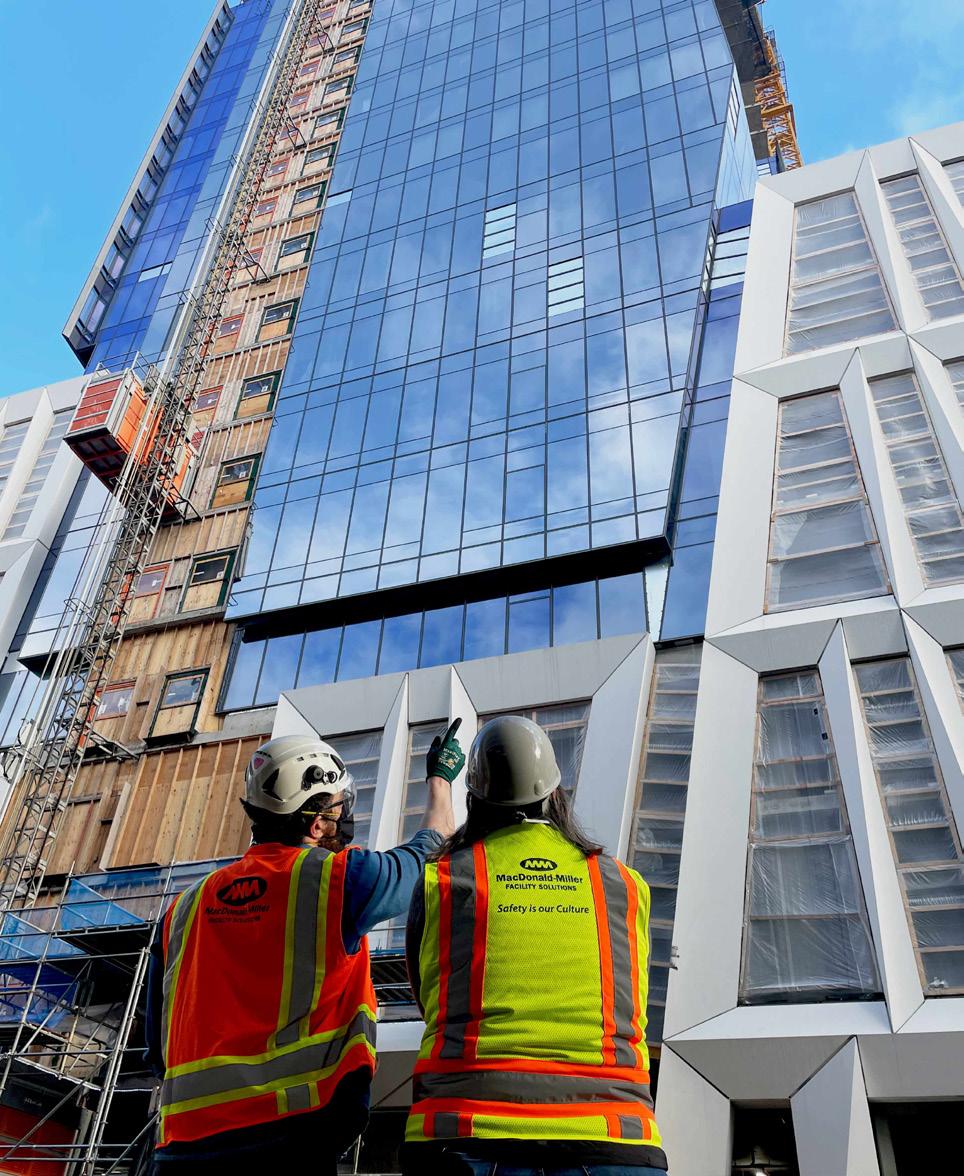


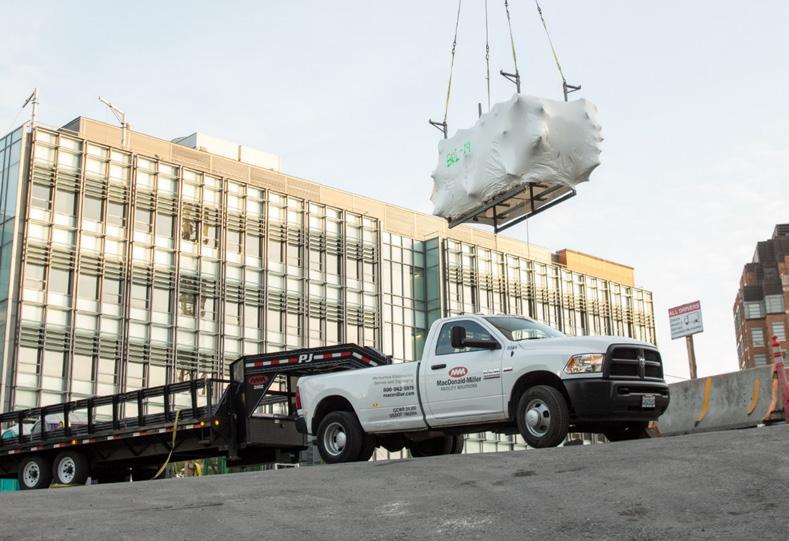
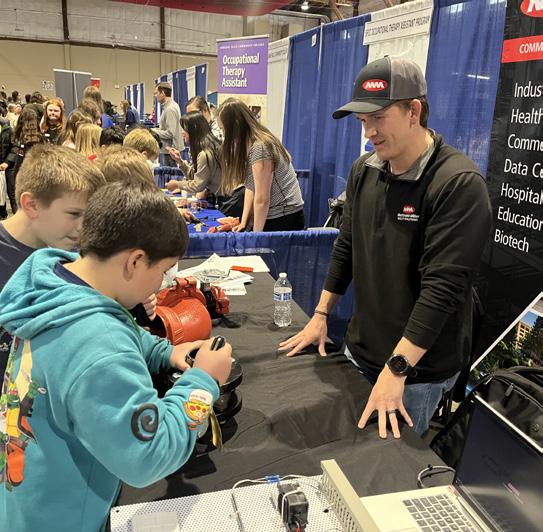
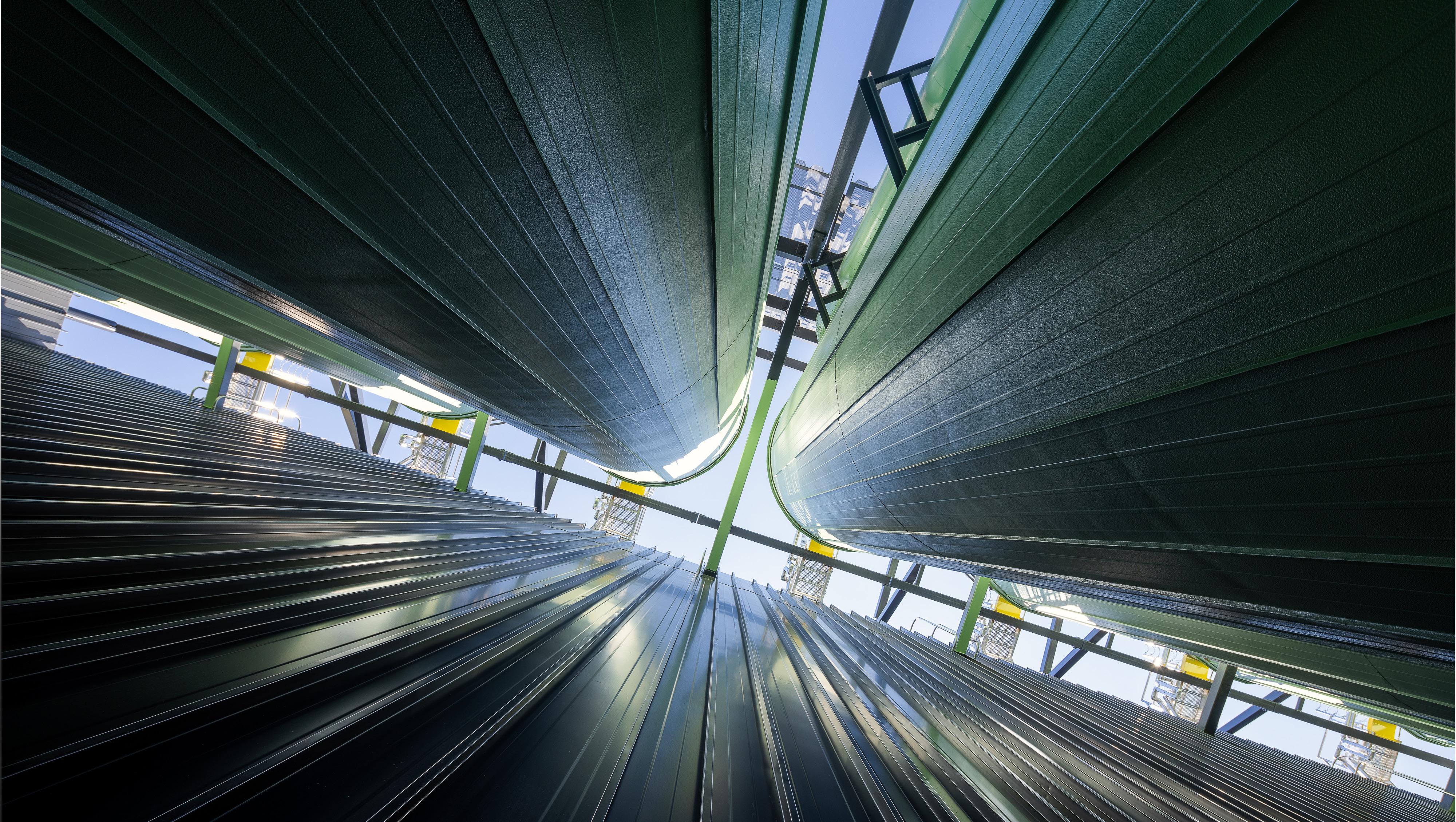
We are a commercial mechanical contractor with an extensive in-house engineering team. We provide design-build services for HVAC, plumbing, and controls for new construction and tenant improvements, as well as energy management solutions for existing and new buildings with our smart building analytics. Our 24/7 service and maintenance assure that your building runs as smooth as the day it was turned on. With 12 offices located throughout Washington and Oregon, we have the local resources to efficiently and expertly address your commercial mechanical needs.
How MMFS defines the following sustainability terms. Energy Use Intensity (EUI) ) Metric used to indicate a building’s energy performance compared to size. Annual energy use divided by conditioned gross square footage (kBTUs/square feet/year). Typically excludes parking area.
Lower EUI demonstrates less energy used.
Greenhouse Gases (GHG) There are six (6) according to the GHG Protocol Corporate Standard (revised edition) – Carbon Dioxide (CO2 ), Methane (CH4 ), Nitrous Oxide (N2O), Hydrofluorocarbons (HFCs), Perfluorocarbons (PFCs), and Sulfur Hexafluoride (SF6 ). Typically expressed in CO2 equivalents (CO2e). Note – this list is not all inclusive.
Net Zero Carbon (by 2040) For the purposes of the Climate Pledge, driving down to zero relevant GHG emissions affiliated with our corporate operations (Scopes 1–3), measured over 12 consecutive months. This involves electrification of company assets, value chain efficiencies, transition of our energy grid to carbon-free fuel sources, and eventual credible offsetting. The GHGs are translated into the same unit of measurement (metric tons of carbon dioxide equivalence, or MT CO2e).
by